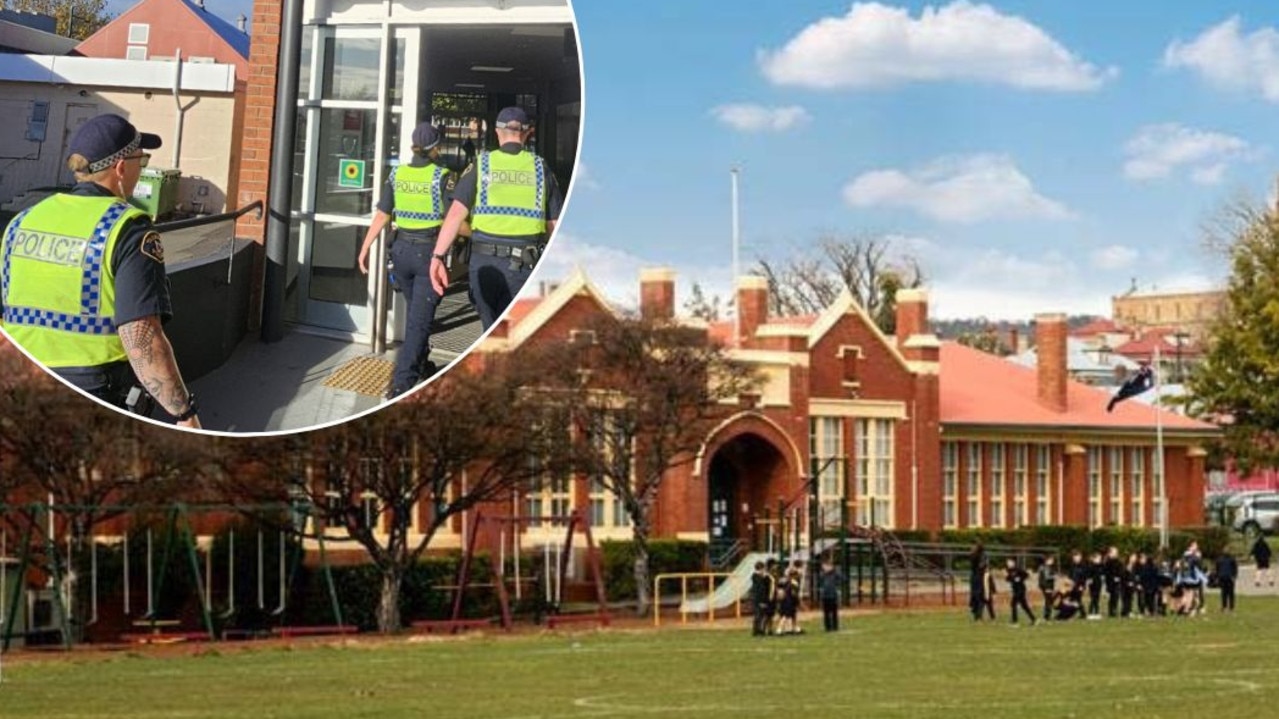NAPLAN results 2024: How Tasmanian students performed in literacy and numeracy test
This year’s NAPLAN results have been released, revealing how the nation’s primary and secondary students are performing. See how Tasmania’s school kids compare.

Tasmania
Don't miss out on the headlines from Tasmania. Followed categories will be added to My News.
The latest NAPLAN results show the performance of Tasmanian primary and secondary students remains below the national average as our kids continue to lag behind their counterparts across most other states and territories.
Released on Wednesday, the 2024 National Assessment Program – Literacy and Numeracy (NAPLAN) results were generally stable compared to those of 2023, barring some minor increases and decreases.
Across Australia, nearly 1.3m students in years 3, 5, 7, and 9 submitted tests for NAPLAN in the second year of the overhauled assessment system, which now sees the testing undertaken in March instead of May and uses four levels of proficiency: ‘exceeding’, ‘strong’, ‘developing’, and ‘needs additional support’.

Australian Curriculum, Assessment and Reporting Authority (ACARA) CEO Stephen Gniel said caution needed to be exercised when trying to compare this year’s data with the results gathered in the first year of the new testing regime because “national data rarely shows any significant change over a single year”.
“The 2024 results continue to show strong performance from Australian students in literacy and numeracy. However, they also provide clear information on areas requiring our collective focus and effort for improvement,” he said.
“The challenges remain with supporting those students identified in the ‘needs additional support’ category and tackling the ongoing educational disparities for students from non-urban areas, First Nations Australian heritage and those with low socio-educational backgrounds.”
The results continue to show that female students outperform male students in literacy, while stronger performance levels tend to align with students from higher socio-educational backgrounds, those living in urban areas, and from non-indigenous backgrounds.

Compared to the national average, higher proportions of Tasmanian students were classified as ‘needs additional support’ or ‘developing’ across almost all domains and year levels in 2024.
However, there were some areas of minor improvement. The percentage of Tasmanian Year 3 students who were classed as ‘needs additional support’ and ‘developing’ in the domain of writing was 27.8 per cent in 2024, a 1.5 per cent decrease on the 2023 result.
A greater proportion of Year 9 students in the state were ‘exceeding’ in writing this year, with 15.6 per cent falling under that category (a 1.7 per cent increase). This compared to the national average of 21.1 per cent.
Of the Year 5 students tested for spelling, there was a 1.7 per cent increase in those who were either categorised as ‘needs additional support’ or ‘developing’ (40.2 per cent).

There was one substantiated cheating incident in NAPLAN testing this year, with 19 students at a single school in Western Australia found to have had inappropriate assistance made available to them during the test.
ACARA says the school has been “counselled” as a result of the incident and data relating to the students involved was withheld due to being “compromised”.
HOW TASSIE’S KIDS PERFORMED IN NAPLAN 2024:
Year 3 reading: ‘Needs additional support – 15 per cent (national average 11.3 per cent); Developing 21.2 per cent (national average 20.5 per cent); Strong 43.4 per cent (national average 46.2 per cent); Exceeding 17.6 per cent (national average 20.1 per cent)
Year 3 writing: Needs additional support 8 per cent (national average 5.6 per cent); Developing 19.8 per cent (national average 15.6 per cent); Strong 65.2 per cent (national average 68.5 per cent); Exceeding 4.2 per cent (national average 8.3 per cent)
Year 3 spelling: Needs additional support 15.5 per cent (national average 11.2 per cent); Developing 30.5 per cent (national average 26.3 per cent); Strong 40.6 per cent (national average 45.3 per cent); Exceeding 10.6 per cent (national average 15.3 per cent)
Year 3 grammar and punctuation: Needs additional support 22.5 per cent (national average 16.1 per cent); Developing 31.8 per cent (national average 28.1 per cent); Strong 37.1 per cent (national average 43 per cent); Exceeding 5.8 per cent (national average 10.9 per cent)
Year 3 numeracy: Needs additional support 11.5 per cent (national average 9.7 per cent); Developing 27.9 per cent (national average 25 per cent), Strong 51.4 per cent (national average 53.3 per cent); Exceeding 6.7 per cent (national average 10.2 per cent)
Year 5 reading: Needs additional support 12.5 per cent (national average 8.7 per cent); Developing 21.2 per cent (national average 18.2 per cent); Strong 47.2 per cent (national average 49.8 per cent); Exceeding 16.6 per cent (national average 21.5 per cent)
Year 5 writing: Needs additional support 10.7 per cent (national average 8.7 per cent); Developing 26.1 per cent (national average 22.2 per cent); Strong 53.9 per cent (national average 55.9 per cent); Exceeding 6.7 per cent (national average 11.4 per cent)
Year 5 spelling: Needs additional support 14.9 per cent (national average 9.5 per cent); Developing 25.3 per cent (national average 21.1 per cent); Strong 43.5 per cent (national average 47.3 per cent); Exceeding 13.7 per cent (national average 20.4 per cent)
Year 5 grammar and punctuation: Needs additional support 15.1 per cent (national average 10.4 per cent); Developing 28.6 per cent (national average 23.2 per cent); Strong 46.8 per cent (national average 50.5 per cent); Exceeding 6.9 per cent (national average 14.2 per cent)
Year 5 numeracy: Needs additional support 12.4 per cent (national average 8.6 per cent); Developing 27.3 per cent (national average 21.9 per cent); Strong 51.7 per cent (national average 55.3 per cent); Exceeding 6.2 per cent (national average 12.5 per cent)
Year 7 reading: Needs additional support 12.6 per cent (national average 10.2 per cent); Developing 22 per cent (national average 21 per cent); Strong 45.7 per cent (national average 47.4 per cent); Exceeding 17 per cent (national average 19.9 per cent)
Year 7 writing: Needs additional support 13.1 per cent (national average 10.4 per cent); Developing 26.8 per cent (national average 22.7 per cent); Strong 44.6 per cent (national average 47.6 per cent); Exceeding 12.7 per cent (national average 17.7 per cent)
Year 7 spelling: Needs additional support 11.8 per cent (national average 7.9 per cent); Developing 22.3 per cent (national average 18.3 per cent); Strong 46.9 per cent (national average 49.2 per cent); Exceeding 16.3 per cent (national average 23.1 per cent)
Year 7 grammar and punctuation: Needs additional support 16.7 per cent (national average 13.2 per cent); Developing 26.9 per cent (national average 23.8 per cent); Strong 43.7 per cent (national average 45.5 per cent); Exceeding 9.9 per cent (national average 16 per cent)
Year 7 numeracy: Needs additional support 13.7 per cent (national average 9.4 per cent); Developing 26.9 per cent (national average 21.9 per cent); Strong 50 per cent (national average 53.7 per cent); Exceeding 6.7 per cent (national average 13.5 per cent)
Year 9 reading: Needs additional support 14.5 per cent (national average 11.1 per cent); Developing 25.8 per cent (national average 24.1 per cent); Strong 41.9 per cent (national average 45 per cent); Exceeding 15.2 per cent (national average 18 per cent)
Year 9 writing: Needs additional support 15.4 per cent (national average 11.6 per cent); Developing 28.2 per cent (national average 25.7 per cent); Strong 38.1 per cent (national average 39.9 per cent); Exceeding 15.6 per cent (national average 21.1 per cent)
Year 9 spelling: Needs additional support 10.5 per cent (national average 6.9 per cent); Developing 23.1 per cent (national average 19.3 per cent); Strong 52.6 per cent (national average 56.2 per cent); Exceeding 11.2 per cent (national average 15.8 per cent)
Year 9 grammar and punctuation: Needs additional support 19.8 per cent (national average 14.6 per cent); Developing 31.1 per cent (national average 28.7 per cent); Strong 35.8 per cent (national average 39.5 per cent); Exceeding 10.7 per cent (national average 15.3 per cent)
Year 9 numeracy: Needs additional support 14 per cent (national average 10.4 per cent); Developing 28.9 per cent (national average 24.4 per cent); Strong 50.5 per cent (national average 54.5 per cent); Exceeding 4.1 per cent (national average 8.9 per cent)





